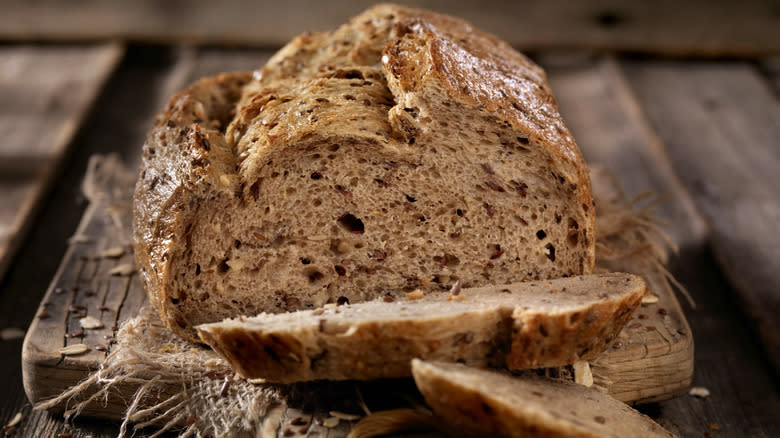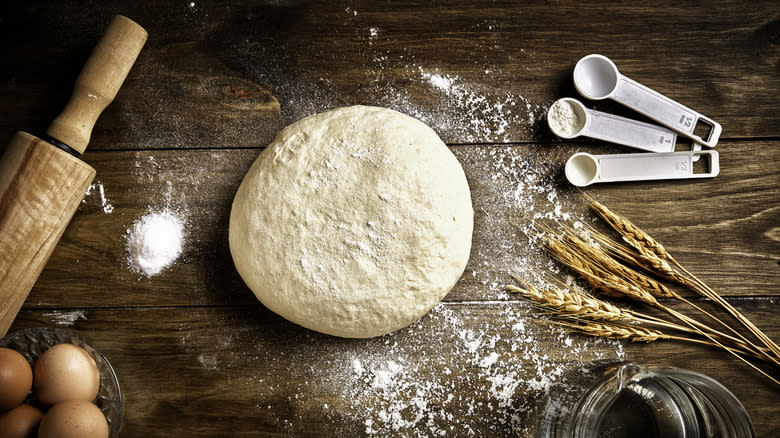When Baking Bread With Whole Wheat, There's A Crucial Tip To Keep In Mind

Baking bread is always a challenging task filled with a lot of rules and a lot of mistakes you can make, and whole wheat bread only adds to that challenge. It seems counterintuitive, since the more natural whole wheat has that feeling of wholesome, rustic simplicity to it, but the unique structure of whole wheat flour makes for a lot of baking complications. White flour is made by removing the germ and bran from whole wheat, which cuts out a lot of the nutrition but also leads to a cleaner taste and softer texture.
Having the germ and bran to deal with is what makes whole wheat so tricky because they add weight and react differently to kneading or water. Essentially, whole wheat changes the calculus of most bread recipes, even if the fundamentals remain the same. It's harder to rise and harder to handle, but there is one extra step you can take that will help you deal with those issues: autolyse.
Autolyse refers to a rest period after you add the water to flour, but before you add other ingredients. You just mix the two until you get a shaggy dough, then leave it for 30-60 minutes without kneading. That rest period is beneficial because the germ and bran in whole wheat causes it to absorb more moisture than white flour and do so more slowly. The autolyse break gives your dough extra time to account for that.
Read more: 23 Whole Foods Baked Goods, Ranked
Resting Whole Wheat Dough With Autolyse Helps Texture And Gluten Development

Autolyse may seem simple, but that extra time to hydrate your bread can have a profound impact. One of the other effects of whole wheat is that the germ and bran can inhibit gluten development, leading to denser, harder loaves of bread. However adding water to flour (even before yeast) starts some of the reactions that bread baking and gluten-development depends on early.
Water activates enzymes in the flour, which break down protein. This actually makes the dough stronger and easier to handle because the slack, wet dough is less likely to rip while kneading. It also means the dough is better at holding in the gasses from fermentation, leading to a stronger rise, which the heavier whole wheat dough really needs. Finally, the enzymes start transforming the flour's starch into sugar, which is what yeast feeds on. So, when you do finally add the yeast, it already has a full buffet of sugars waiting to jump start it.
As beneficial as autolyse can be for whole wheat bread, it does have the downside of making it harder to incorporate dry ingredients, like more flour, after it's done, so you will need to dissolve your yeast in a bit of water before adding it. Make sure you are precise with your measurements, since it will be hard to make adjustments later. But that is a small burden for the big improvement your whole wheat bread will see.
Read the original article on Tasting Table.


